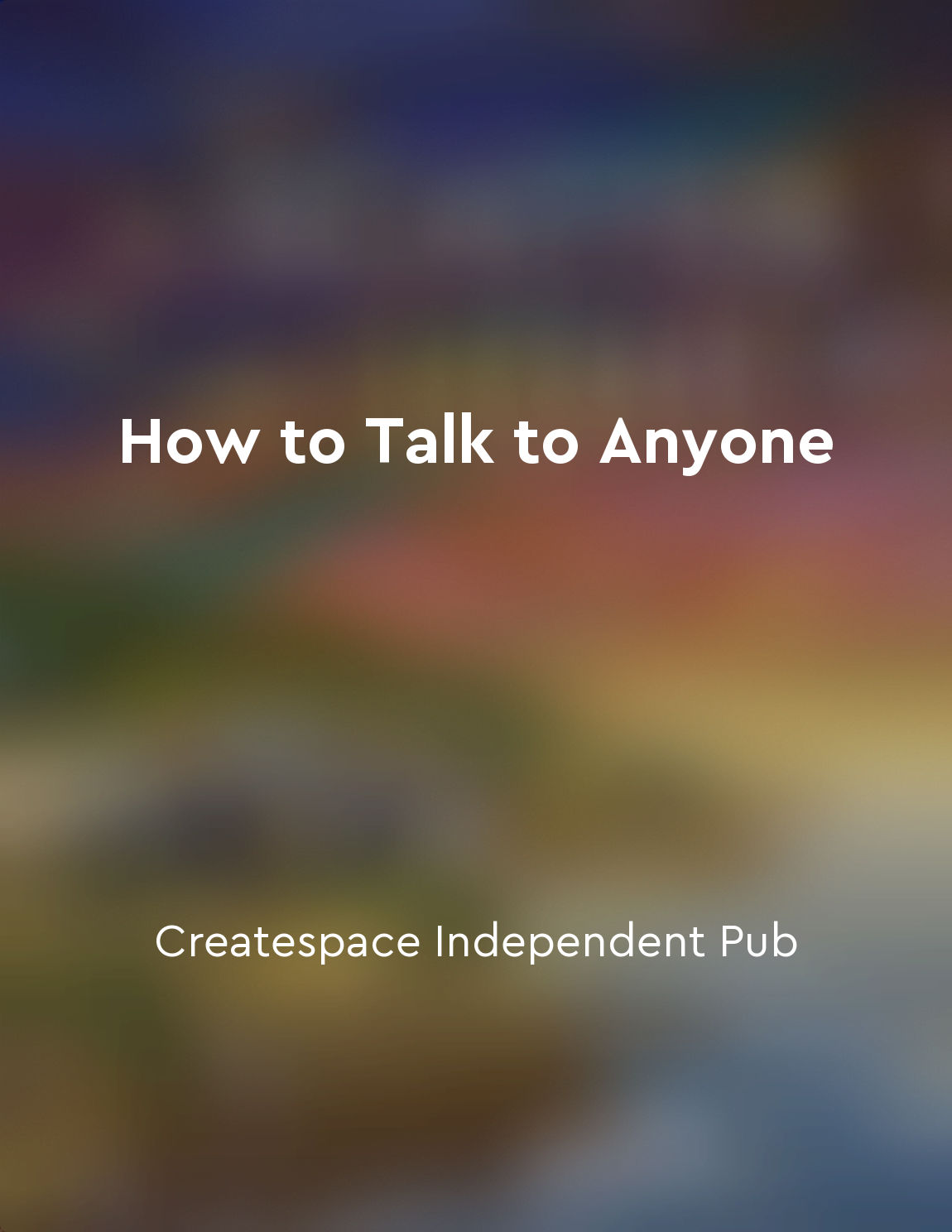Mirroring another person's body language can build rapport from "summary" of How to Read a Person Like a Book by Gerard I. Nierenberg
When you mirror another person's body language, you are essentially creating a subconscious connection with them. This mirroring technique involves mimicking the other person's gestures, facial expressions, posture, and even tone of voice. By doing so, you are sending a signal to the other person that you are on the same wavelength as them, which can help establish a sense of rapport. Mirroring someone's body language can help you build trust and establish a deeper connection with them. People tend to feel more comfortable and at ease with those who behave in a similar manner to them. When you mirror someone's body language, you are essentially saying, "I understand you, and I am like you." This can help create a sense of unity and understanding between you and the other person. Mirroring can also help you enhance your communication and negotiation skills. By mirroring someone's body language, you are showing them that you are paying attention to them and that you are actively listening. This can make the other person feel valued and respected, which can result in more effective communication and a smoother negotiation process. In addition, mirroring can help you adapt to different social situations and improve your ability to connect with a variety of people. By mirroring someone's body language, you are showing them that you are adaptable and flexible, which can help you navigate different social dynamics more easily. This can be particularly useful in professional settings, where building rapport and establishing connections with clients, colleagues, or partners is crucial.- Mirroring another person's body language can be a powerful tool for building rapport, establishing trust, improving communication, and enhancing your social skills. It is a simple yet effective technique that can help you create stronger connections with others and navigate social interactions more successfully.
Similar Posts
Adjust your personal space boundaries based on the context
Personal space is a dynamic concept that can change depending on the situation you find yourself in. The boundaries of your per...
Embrace failure as a learning opportunity
Failure is not the end of the road, but rather a stepping stone to success. It is a natural part of the learning process, a nec...
Nonverbal communication is essential for understanding others
Understanding others is a complex task that goes beyond just listening to their words. Nonverbal communication plays a crucial ...

Pay attention to pupil dilation, as it can reveal arousal or interest
In the realm of body language, our eyes can often betray our true feelings and intentions. One such indicator to be mindful of ...
Nonverbal signals can help you detect deception
When interacting with others, it is important to pay attention not only to what they say but also to how they say it. Nonverbal...

Use humor to lighten the mood
When things get tense or awkward in a conversation, one of the best ways to break the tension is to inject some humor. Humor ha...
Anchoring can influence perceptions and decisionmaking processes
Anchoring is a powerful cognitive bias that can significantly impact how we perceive information and make decisions in both our...
Rely on a combination of verbal and nonverbal cues for effective communication
Effective communication involves more than just the words we say. It is essential to pay attention to both verbal and nonverbal...
Vocal tone and pitch can convey emotions and intentions
When we communicate with others, our vocal tone and pitch play a significant role in conveying emotions and intentions. The way...
Trust is built on understanding
Trust is a delicate and precious commodity that can only be earned through understanding. It is not something that can be bough...

